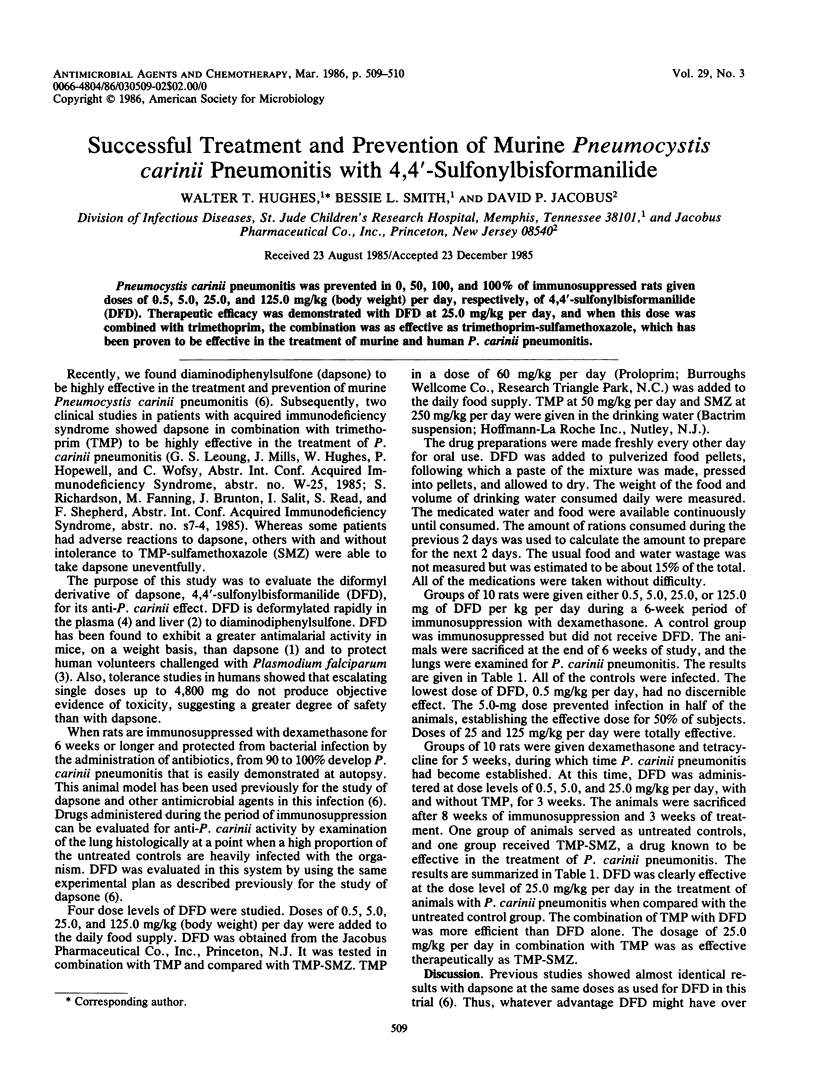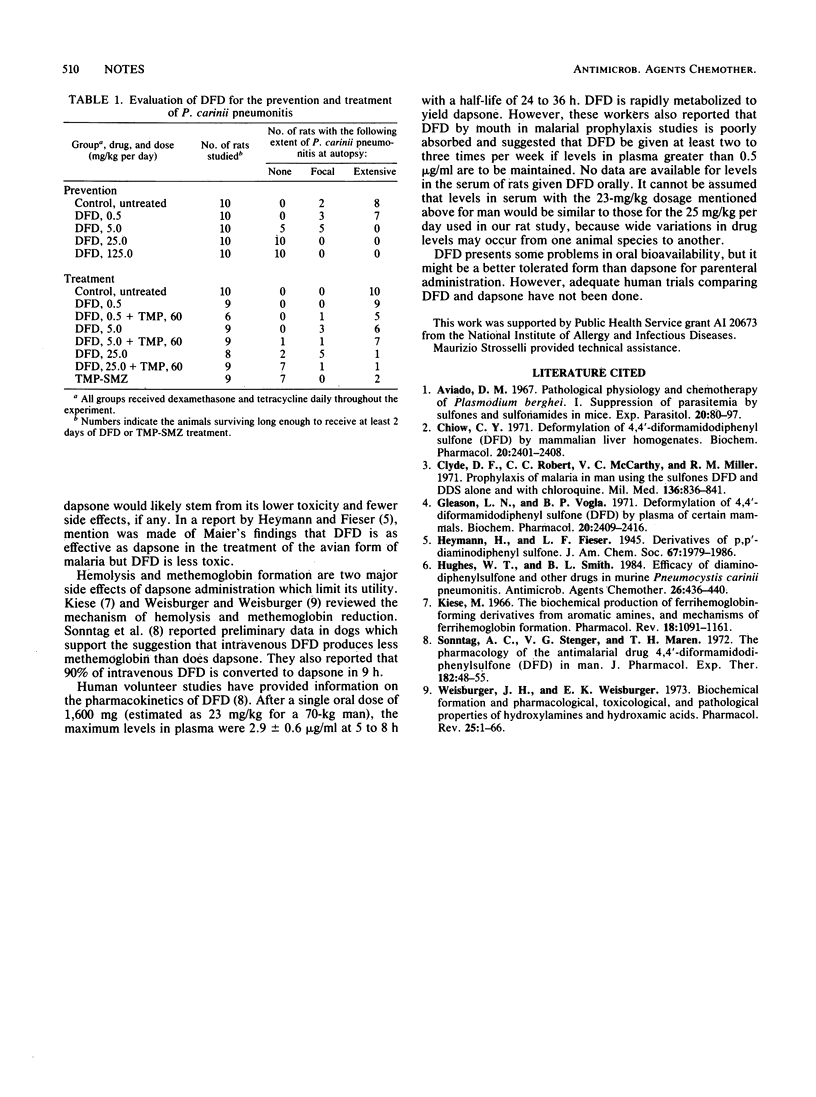Abstract
Pneumocystis carinii pneumonitis was prevented in 0, 50, 100, and 100% of immunosuppressed rats given doses of 0.5, 5.0, 25.0, and 125.0 mg/kg (body weight) per day, respectively, of 4,4'-sulfonylbisformanilide (DFD). Therapeutic efficacy was demonstrated with DFD at 25.0 mg/kg per day, and when this dose was combined with trimethoprim, the combination was as effective as trimethoprim-sulfamethoxazole, which has been proven to be effective in the treatment of murine and human P. carinii pneumonitis.
Full text
PDF

Selected References
These references are in PubMed. This may not be the complete list of references from this article.
- Aviado D. M. Pathologic physiology and chemotherapy of Plasmodium berghei. I. Suppression of parasitemia by sulfones and sulfonamides in mice. Exp Parasitol. 1967 Feb;20(1):88–97. doi: 10.1016/0014-4894(67)90026-4. [DOI] [PubMed] [Google Scholar]
- Chiou C. Y. Deformylation of 4,4'-diformamidodiphenyl sulfone (DFD) by mammalian liver homogenates. Biochem Pharmacol. 1971 Sep;20(9):2401–2408. doi: 10.1016/0006-2952(71)90240-1. [DOI] [PubMed] [Google Scholar]
- Clyde D. F., Rebert C. C., McCarthy V. C., Miller R. M. Prophylaxis of malaria in man using the sulfones DFD and DDS alone and with chloroquine. Mil Med. 1971 Nov;136(11):836–841. [PubMed] [Google Scholar]
- Gleason L. N., Vogh B. P. Deformylation of 4,4'-diformamidodiphenyl sulfone (DFD) by plasma of certain mammals. Biochem Pharmacol. 1971 Sep;20(9):2409–2416. doi: 10.1016/0006-2952(71)90241-3. [DOI] [PubMed] [Google Scholar]
- Hughes W. T., Smith B. L. Efficacy of diaminodiphenylsulfone and other drugs in murine Pneumocystis carinii pneumonitis. Antimicrob Agents Chemother. 1984 Oct;26(4):436–440. doi: 10.1128/aac.26.4.436. [DOI] [PMC free article] [PubMed] [Google Scholar]
- Kiese M. The biochemical production of ferrihemoglobin-forming derivatives from aromatic amines, and mechanisms of ferrihemoglobin formation. Pharmacol Rev. 1966 Sep;18(3):1091–1161. [PubMed] [Google Scholar]
- Weisburger J. H., Weisburger E. K. Biochemical formation and pharmacological, toxicological, and pathological properties of hydroxylamines and hydroxamic acids. Pharmacol Rev. 1973 Mar;25(1):1–66. [PubMed] [Google Scholar]


